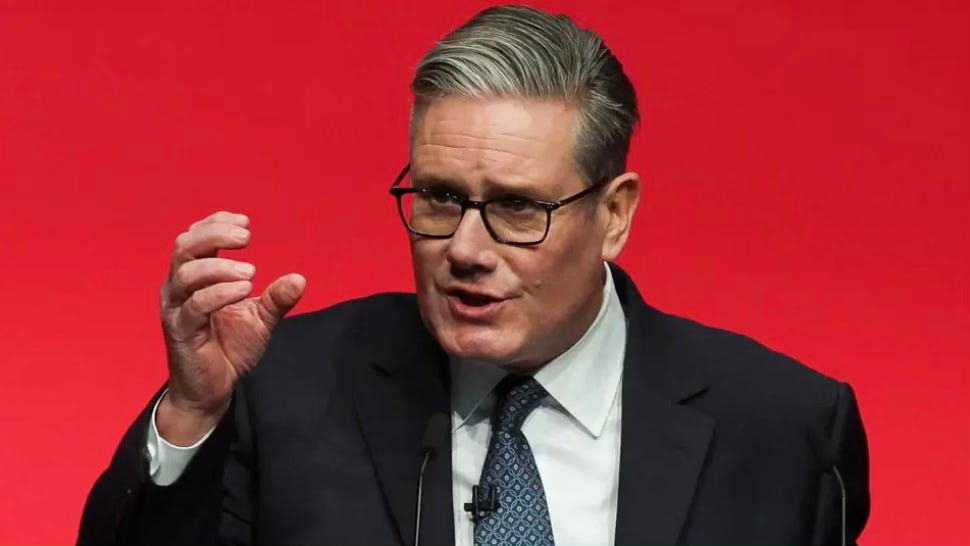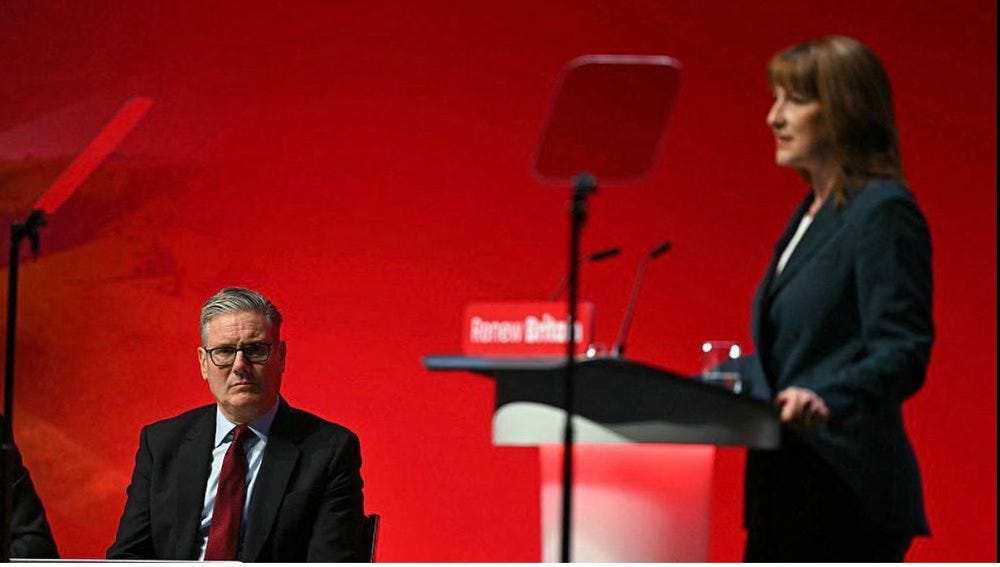We’re not thinking hard enough about societal risks
Some reflections on how the role of inequality as a risk driver is not properly factored into government resilience planning - and quick takeaways from Labour conference
This article was originally published by the National Preparedness Commission on 29 September. I’m grateful to them for the opportunity to write for their blog.
Over the summer the Cabinet Office published a Chronic Risks Analysis (CRA), separating out for the first time a set of ‘chronic’ risks (e.g. climate change, antimicrobial resistance, artificial intelligence) from the ‘acute’ risks (e.g. terrorism, flooding, pandemics) in the National Risk Register. Opinions differ about the pros and cons of having a separate list (with many concerned about the impact on the government’s ability to consider combining or cascading risks), but it’s good to see that some thought is being given to long-term risks in the context of a political system that seems fixated on short-termism.
Is the scope of the chronic risks contained in this first iteration sufficiently broad? The vast majority of the 25 identified chronic risks relate to externalities – to changes in the world around us, from disinformation or global supply chains to changing cyber security threats and competition for critical minerals. None of them really engage with the internal risks that arise from the (degraded) state of our nation.
In this sense, the Chronic Risk Analysis shares a blind spot with the National Risk Register, which was criticised in 2021 by the Royal United Services Institute for failing to look at “threats to plans and opportunities, or the risks to the achievement of the country’s goals”.
Of the six risks that are categorised as societal or economic (the other categories being security, technology, geopolitical, environmental and biosecurity), none really acknowledges the ways in which socio-economic problems – not least socio-economic inequality – both present a direct risk in themselves and exacerbate a range of other risks.
In the Wealth Gap Risk Register, we at the Fairness Foundation argued that wealth inequality is already negatively impacting the stability of democracy in the UK, the health of our economy, social cohesion, and our ability and willingness to address climate breakdown, with the risks of much worse impacts to come if action is not taken to reduce wealth inequality or mitigate these spillover effects.
The way in which societal issues such as inequality act as risk magnifiers has been recognised in some quarters. In its 2025 Global Risks Report, the World Economic Forum assesses inequality as its seventh highest risk over both a two- and ten-year time horizon, above cyber espionage and warfare on the latter. KPMG published a report in 2022 about social inequality as a business risk, arguing that it “limits productivity and has the potential to constrain consumer spending and growth, destabilise supply chains, trigger political instability, and jeopardise [companies’] social license to operate.”
Some might argue that the Chronic Risks Analysis does engage with inequality, by including a risk on the ‘disproportionate impact on vulnerable persons’. But this is arguably a category error, in three respects. First, it isn’t a risk, but a realised impact; people who are more vulnerable to certain events will necessarily be more impacted by them (and who is most vulnerable will vary from risk to risk). Second, it is a cross-cutting aspect of risk assessment and mitigation, not a standalone risk. Third, this risk is described as something that is impacted by other risks, at the bottom end of the chain, rather than one that feeds into and exacerbates other risks.
The way in which vulnerability is assessed is also problematic, with a narrow focus on specific drivers such as “being in need of special care, support, or protection because of age, disability, risk of abuse or neglect”. The report notes that “vulnerable people may be more likely to suffer financial hardship either as a direct or indirect consequence of a risk materialising”, but does not explicitly recognise that existing financial hardship is a driver of vulnerability, let alone acknowledge the causal links between inequality and vulnerability in this sense.
To its credit, the document does point out that “health and socioeconomic disparities are also linked and impact on people’s ability to reduce their risk and respond in emergencies”, and that “addressing disparities and disadvantages promotes social equality [and] enhances resilience to crises”. It also states that “reducing inequality can lead to a fairer society and a stronger economy”. The mitigation measures cited for addressing vulnerability are sensible as far as they go, including the impacts of the government’s missions on regional disparities, the protections afforded by the Equality Action 2010, and the Employment Rights Bill.
However, if the authors recognise that inequality undermines resilience, should it (inequality) not be included either as its own risk or as a cross-cutting risk driver? A failure to prepare for the inevitable outcomes of existing trends, like increasing inequality and its mushrooming spillover impacts, is a significant gap in national resilience planning. And a secondary benefit of treating inequality as a risk (or risk driver) is that mitigating it would help to reduce the number of vulnerable people that authorities would need to worry about when it comes to the impacts of other risks (an issue explored during a recent Fairness Foundation roundtable on wealth inequality and the risks of extreme heat), as well as reducing the likelihood and impact of a range of societal risks, including economic stagnation, democratic decline and even societal collapse.
The approach taken to vulnerability within the CRA and elsewhere is overly focused on individual problems at the expense of understanding the systemic drivers of many of those problems. These structural issues, including but not limited to socio-economic inequality, act as barriers to people building up capacity and capability – and exercising agency and responsibility – at an individual level. Enabling these positive feedback loops, by tackling structural issues like inequality, would reduce millions of people’s vulnerability to a range of risks, while building their capability to respond to crises as individuals – a capability that is hardwired into planning assumptions, and is a critical enabler of national resilience.
The UK, like many other countries, faces a future beset by risks of social, economic, democratic and environmental decline, if not breakdown. The Chronic Risk Analysis marks a promising step forward in our collective efforts to identify and mitigate long-term risks. However, if we are to achieve our shared goals, this cannot be a dry and technocratic exercise. We need to focus on a broader range of risk drivers, including those that originate from the problems, like inequality, that animate the most contentious political debates of our times.
OUR TAKEAWAYS FROM LABOUR CONFERENCE
Prime Minister, 30 September
“Wealth creation is hoarded by just a few communities”, the PM said in his conference speech. Another way of putting this is that too much wealth is extracted from our economy, rather than genuinely being created in the first place. He went on to say that “the defining mission of this government is to grow the economy, improve living standards, and change the way we create wealth.” That third ‘mission’ is key. Creating wealth that benefits everyone, that spreads wealth more fairly across society rather than concentrating it at the top, will help grow the economy - in fact, there’s a limit to how much you can achieve growth without reducing wealth inequality. A more equal society is a more prosperous society, and a more cohesive one.
Repost on LinkedIn / Bluesky / Twitter (X)
Chancellor of the Exchequer, 29 September
“I believe in a Britain founded on contribution, where we do our duty for each other, and where hard work is matched by fair reward. I believe in a Britain based on opportunity, where ordinary kids can flourish, unhindered by their background.” Sounds like Rt Hon Rachel Reeves and her speechwriters have been reading our ‘fair necessities’ that include fair exchange, fair rewards and fair opportunities. Here’s hoping that November’s budget starts to deliver on this vision by taking bold action to tackle wealth inequality, a fundamental barrier to fairness that undermines opportunity and economic growth while weakening our democracy and social cohesion (as per our Wealth Gap Risk Register). The biggest risks by far are the risks of inaction.
Repost on LinkedIn / Bluesky / Twitter (X)





